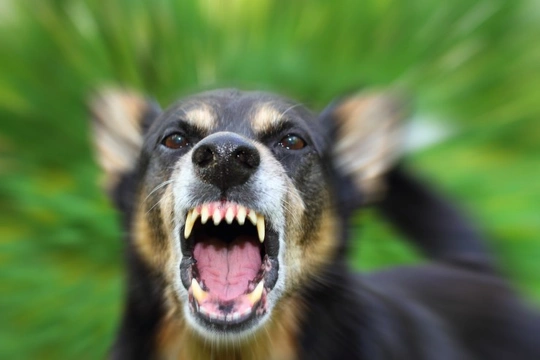
Five myths about canine aggression, busted
Everyone has at least one story about a really aggressive dog that makes it sound as if said dog was Cujo’s bigger, badder brother, a snarling ball of anger just waiting to savage anyone who passed them by. But canine aggression is complex and multi-dimensional, and often, what we read as aggression is not truly aggressive behaviour at all, but indicative of something else.
Gaining a deeper understanding of canine aggression, and also, what does not constitute aggression, can help you to better understand all dogs, as well as know how to read the signs that a particular dog is giving off at any given time, which may be vital when it comes to keeping yourself and your family safe.
In this article, we will work to bust five common myths about canine aggression. Read on to learn more.
1. Dogs that kill prey are aggressive
Dogs that have a strong prey drive and use this to hunt and possibly kill small game are often mistakenly labelled as aggressive by people who witness their single-minded concentration on the hunt, and instinctive kill at the end of it.
But the prey drive and aggression are not the same thing at all; many dogs that are highly valued and prolific hunters are not even remotely aggressive, while other dogs that will nap quite happily cuddled up with a cat may still be apt to snap at people on occasion.
The prey drive is much stronger in some dogs than others, and historically, some dogs were bred and raised for an enhanced prey drive, to assist human hunters with finding and killing food.
Hunting behaviour and aggression are two totally separate things, and should not be viewed as the same.
2. Dogs that growl a lot are obviously aggressive
Most people, and many dogs, will usually give a wide berth to a dog that is growling either constantly or regularly, and dogs such as these will usually soon get a reputation as best avoided and possibly aggressive.
While it is true that growling is an important signal from the dog to take care and be speculative about your approach to them, growling is not necessarily aggressive in and of itself, but can often be akin to warning you off, which may happen due to pain, fear or nerves as well as aggression.
Some dogs that growl may have no intention of biting, and are simply praying that you will leave them alone; other growling dogs may bite if you push them, but growling should be viewed as a communication tool and signal for caution, not an indication of bloodlust!
3. Certain breeds are very aggressive
Every ten years or so, it seems to be that a different breed of dog gets a particularly bad name, usually due to one or two isolated one-off incidents that are often very serious, but are not representative of the breed as a whole.
The German shepherd, Doberman pinscher, Rottweiler and Staffordshire bull terrier have all had their turn; some people will still cross the street to avoid dogs of breeds of this type!
But aggression is as individual as the dog itself, and there is no one breed that can be said to have an inherent instinct to uncontrolled aggression; some breeds may be bred to be more protective, dominant or strong than others, but how this is harnessed in terms of their handling and management is what ultimately makes the dog, and dictates their behaviour.
4. Aggressive dogs attack with no warning
“I was just patting him and with no warning, he turned around and went for me!” Everyone has heard this story, or a variation of it, and to be fair, often, even bystanders will agree with it and support the idea that the dog in the spotlight apparently reacted with no warning to deliver a bite.
But ultimately, this myth comes down to our understanding of canine communication and their warning signs; growling or barking are just two indicators that dogs use to try to get our attention, among many other signals that are all too commonly missed.
Learn to read the body language of the dog fully and in depth, taking into account the combination of signals that the dog might be displaying at any given time, and you will find that you will be much better equipped to predict the dog’s behaviour, sometimes even before they know what they are going to do themselves!
5. A wagging tail is a safe sign that a dog is not aggressive
The very basics of dogs as taught to children usually start with learning that a wagging tail in the dog is a sign of happiness, and this often goes as far as being taken as a sign that the dog is friendly and amenable to an approach.
It is true in many cases that a frantically wagging tail means that the dog it is attached to is happy and excited, but again, this needs to be read in combination with other signals. A taut tail that is slowly waving from side to side, especially if accompanied by raised hackles and a firm stare, can be an indication that the dog is on guard, and not looking to play at all.
Don’t teach your kids that a wagging tail means friends in every situation, and don’t believe this rule for yourself either.



